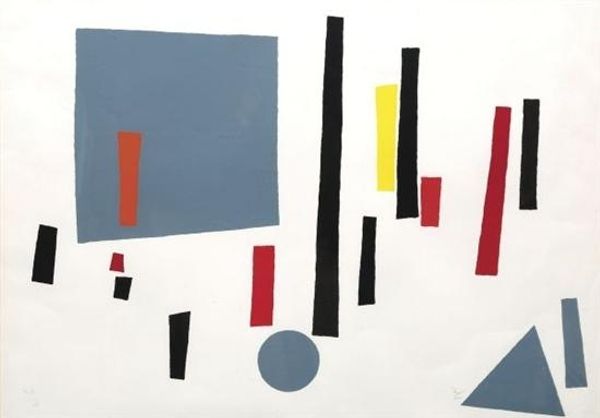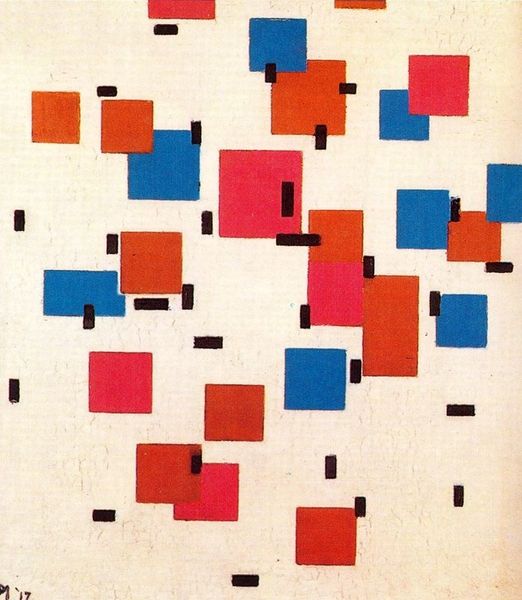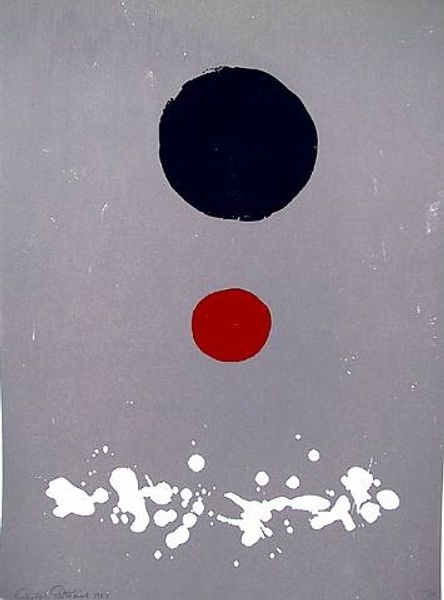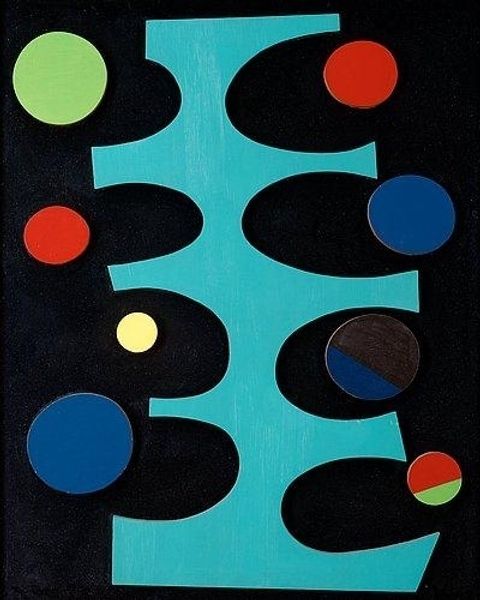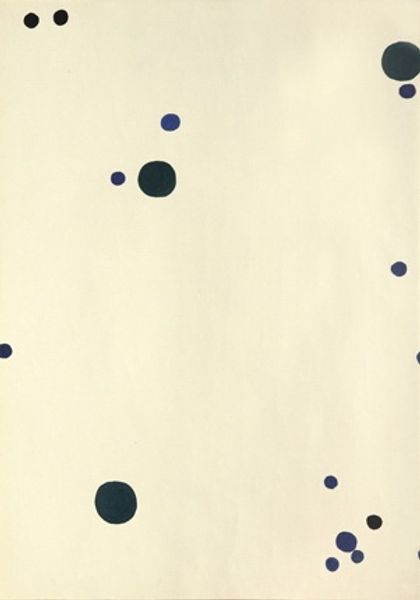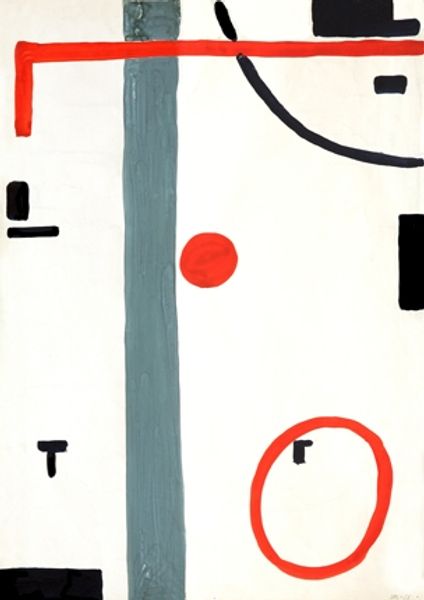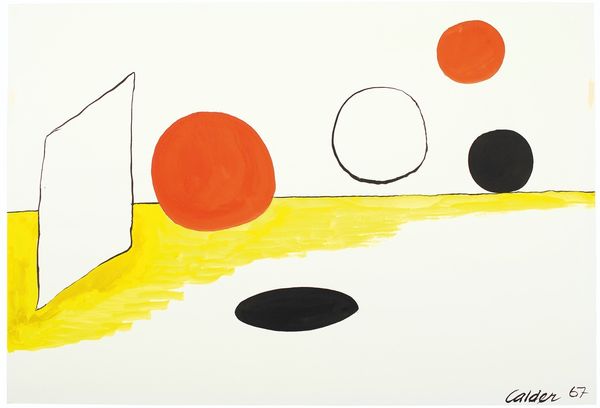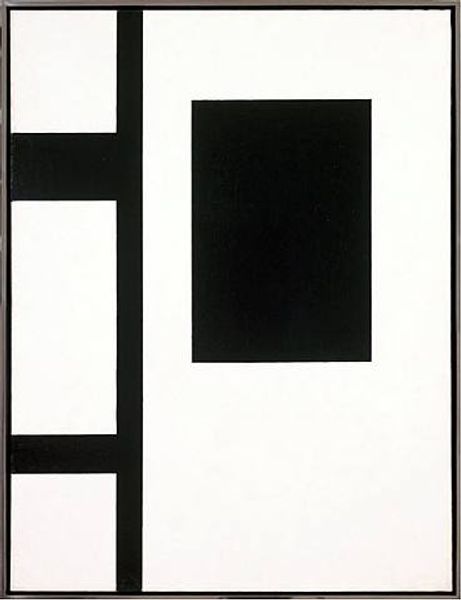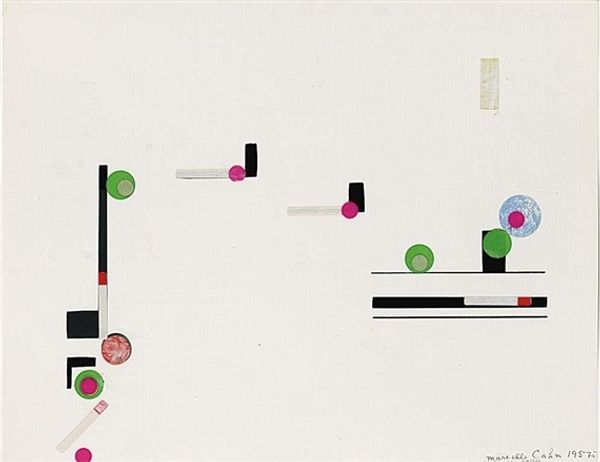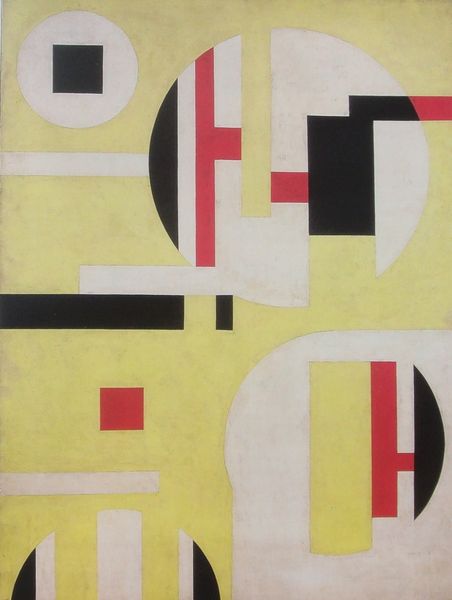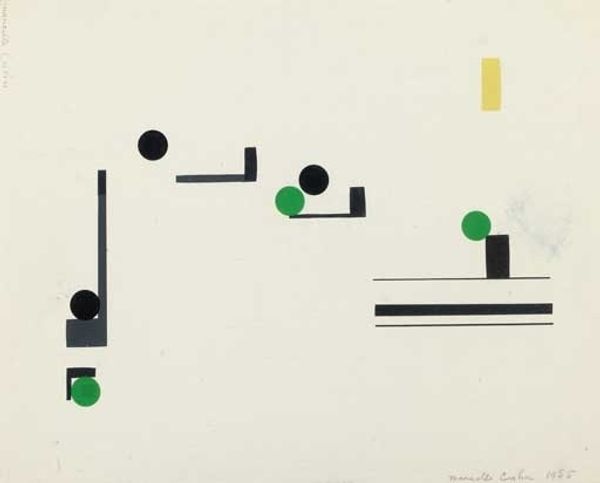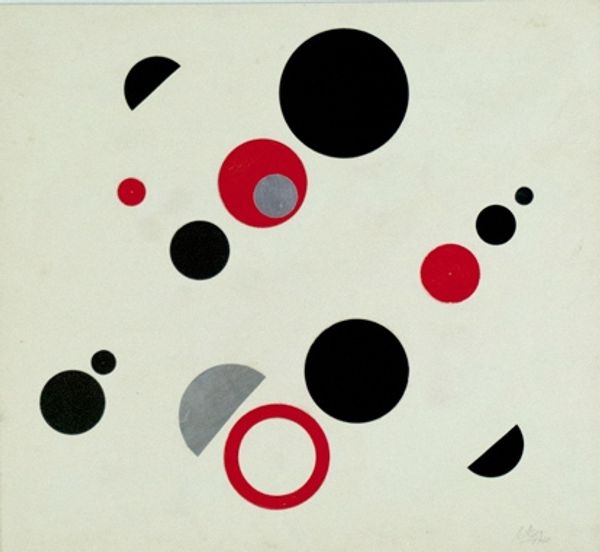
Copyright: Marcelle Cahn,Fair Use
Curator: Before us we have an untitled work, created in 1972 by Marcelle Cahn, a pioneer in the realm of abstract and non-objective art. It presents as a digital print on a square format. Editor: My first impression? It's like a Mondrian trying to be minimalist, but got distracted halfway through by a game of pick-up sticks! I love the playfulness, though. Curator: Playfulness is certainly one reading. What strikes me is the almost mathematical precision within the composition. Notice how each element, the circles, the rectangles, and the connecting lines, exist in carefully calibrated tension with one another. The color palette—restricted to black, red and blue—underscores this austerity. Editor: Austerity, really? To me, it's more like a secret code. Those shapes, scattered across the canvas—they remind me of musical notes dancing on a stave. Perhaps it’s an unfinished symphony, or maybe a map to a hidden stash of joy. Curator: I find the sparseness compelling, actually. It emphasizes the formal relationships. For example, the progression of red dots anchored to a vertical line, the semi-circles balanced asymmetrically... Cahn is playing with spatial relationships. This echoes Constructivist principles but also predates aspects of digital art and its algorithmic aesthetic. Editor: That's fascinating! It does feel ahead of its time. For me, though, it taps into a more primal feeling – it stirs the same feelings I get when spotting those mysterious crop circles in Wiltshire, somewhere between dread and fascination. Cahn gives order, but hints there’s still chaos in the code. Curator: Well, your interpretation certainly adds layers! For me it demonstrates how effectively an artist can achieve a delicate visual balance through simple shapes and color combinations. It's a successful application of structured design, almost diagrammatic in its efficiency. Editor: Yes, but beneath its structured appearance, for me this piece holds the possibilities of a visual poem—open, inviting, with subtle provocations of a mind grappling with representation, in both artistic and social systems of language. It presents an alternate order, a delightful enigma of form, daring you to look closer, even at the 'simple.'
Comments
No comments
Be the first to comment and join the conversation on the ultimate creative platform.
